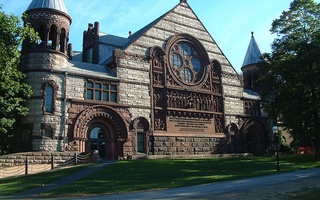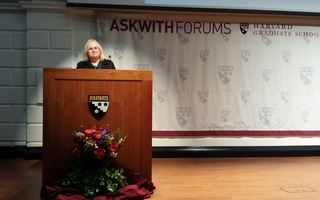
As the University prepares for the public launch of a multi-billion dollar capital campaign, it looks to coordinate across Harvard's 15 schools and balance school-specific interests with a commitment to centralization.
Part One of a five-part series on Harvard's approaching capital campaign. Part Two was published on April 30, Part Three on May 1, Part Four on May 2, and Part Five on May 3.
UPDATED: May 1, 2013, at 10:05 a.m.
Since University President Drew G. Faust assumed her post in 2007, numerous initiatives have represented a strong push towards centralizing Harvard. From a University-wide calendar to centralized information technology services to creating a unified Harvard Library, major projects on campus have been geared towards transforming Harvard from a University characterized as 15 loosely-tied schools to a more cohesive and interconnected institution.
Now, as the University prepares for the public launch of a multi-billion dollar capital campaign, Harvard’s office of Alumni Affairs and Development, which is wrapping up a two-year “quiet phase,” is working to incorporate centralization into the campaign.
“The major contribution of this campaign will not just be the money, it’s going to be this presentation of the many schools of Harvard as a single entity,” said Sidney R. Knafel ’52, a donor who has given tens of millions of dollars to the University.
While Faust’s goal, often phrased as “one University,” is a guiding principle of the upcoming capital campaign, different schools’ priorities, donors, and strategies complicate the ability to run a cohesive campaign.
The drive for a central mission originates partly in donor and alumni reaction to Harvard’s last University-wide capital campaign, vice president for alumni affairs and development Tamara E. Rogers ’74 said in an interview in mid-April. The previous campaign, a six-year endeavor that ended in 1999, raised $2.6 billion for the University.
“We found that alumni really were interested in seeing the totality of the institution,” Rogers said, calling the “breadth of what happens in the University” a “big, compelling story” for donors.
Rogers cited renewable energy and global health as topics that can be studied at multiple schools at Harvard. Alumni have come to expect interdisciplinary collaboration from the University, she said.
In an interview in early March, Faust discussed how inter-school study can incentivize donors as well. “If we have a donor that’s interested in global health, we want to make sure that they see all the different ways that might excite them,” she said. “We think they might do more if they see more.”
Even for “one University,” though, Harvard’s schools have different priorities, different donors, and different campaign strategies, and all of Harvard’s faculties remain “every tub on its own bottom.”
While an overarching campaign executive committee of the University’s biggest donors has been mapping out the structure and message of the campaign for several years, the dean of each school works with an individual committee of supporters to identify and refine school-specific priorities.
“We don’t want to homogenize the schools,” Rogers said in early December. “We do want them to have their strengths and their identities. That’s a strength of the University, but we also want to optimize all of these strengths for better teaching and [more robust] knowledge creation.”
Some University-wide priorities, such as financial aid or teaching and learning, apply to nearly all of Harvard’s schools. House renewal, on the other hand, is a top campaign priority that benefits the College exclusively.
Moving the School of Engineering and Applied Sciences to Allston is another example of a relatively school-specific goal that is a focus of the University’s central administration.
Read more in University News
Panelists Discuss Head Trauma ResearchRecommended Articles
-
 Despite Tough Market, Harvard Law School Is Still a Safe Bet
Despite Tough Market, Harvard Law School Is Still a Safe Bet -
Carrying on the Mantle of ReformThe battle over charter schools is largely a political ploy that undermines substantive policy work. Charters have been proven good models where students thrive and succeed.
-
 2014 US News and World Report College Rankings Are Out
2014 US News and World Report College Rankings Are Out -
 Rank and Defile
Rank and Defile -
 Q&A: Sending Scores, Organizing Essays, and More
Q&A: Sending Scores, Organizing Essays, and More -
 Cahill Discusses Education Reform
Cahill Discusses Education Reform













